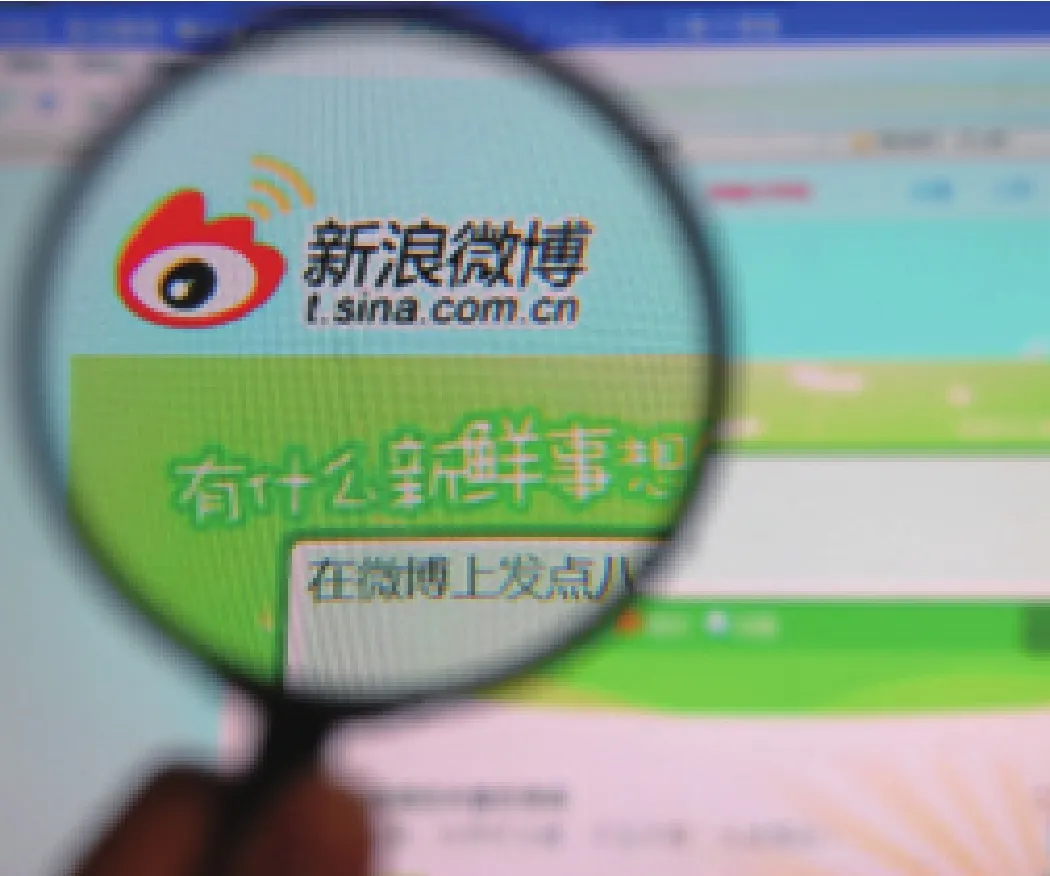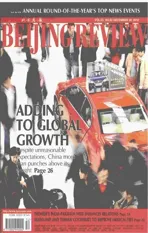TOP 10 CULTURAL EVE NTS IN 2010
2010-10-14本刊编辑部
TOP 10 CULTURAL EVE NTS IN 2010

Deeper Cu ltura l System Refo rm
China’s cultural system reform has progressed in 2010.The Central Government has put forward a series of new thoughts, views and theses on deepening the reform of cultural system and strengthening the construction of cultural industry.
According to the restructuring plan, a large number of state-owned cultural units are being changed into qualified market players. For example, all 580 of China’s publishing houses are expected to complete the transformation from governmental entities to for-profi t enterprises by the end of the year.
Reformed cultural enterprises have been prompted to merge, regroup and reorganize their resources. Media and other cultural industries will be required to do their own financing, to foster the backbone of the industry. The China Securities Regulatory Comm ission says 10 cultural enterprises have already been listed on the domestic A-share exchange through IPOs, raising a total of 16 billion yuan($2.4 billion).
Reform of personnel, income and other systems in nonprofit public cultural institutions has also been gradually deepened this year.
Add itions to UNESCO Heritage List
UNESCO’s World Heritage Committee has added China Danxia and the“Center of Heaven and Earth” to the world heritage list at its 34th session, held from July 25 to August 3 in Brasilia, Brazil. So far, 28 cultural, eight natural and four mixed sites from China have been included in the list.
China Danxia refers to a type of landscape in southeast China that features steep cliffs, spectacular red rocks, deep ravines, grand waterfalls and dark green rivers. China Danxia comprises six geologically and geographically related areas that collectively feature Danxia geomorphology. “The Center of Heaven and Earth” is an historic monument in Dengfeng, Henan Province.
Peking Opera, together w ith acupuncture and moxibustion, were added to UNESCO’s Representative List of the Intangible Cultural Heritage of Humanity. The decision was made during the fifth session of UNESCO’s Inter-governmental Committee for the Safeguarding of the Intangible Cultural Heritage meeting on November 16 in Nairobi, Kenya. The Representative List includes 28 Chinese traditions; the List of Intangible Cultural Heritage in Need of Urgent Safeguarding includes six Chinese traditions, including movable wood-block type, enabling mass printing.
Peking Opera, w idely known as China’s national opera, is the most influential and representative of all operas in China. Acupuncture and moxibustion are traditional Chinese medicine therapies.


New M ilestones in the Movie Industry
Avatar—the blockbuster by James Cameron—wowed Chinese fans and kindled their passion for 3D movies.Avatarearned more than $100 million in its fi rst three weeks in China, becoming the country’s biggest box office hit to date. More consequential than its box office success, however, was its influence on viewers’ interest in 3D. FollowingAvatar, many big-budget movies have been shot in 3D technology.
Another blockbuster in China this year wasAftershock, by Chinese director Feng Xiaogang. From its nationw ide release on July 22 until August 8, the fi lm took in more than 500 million yuan ($73.5 million),a new record for a domestic fi lm. It tells the moving story of a family affected by the devastating Tangshan earthquake, which leveled the northern Chinese city on July 28, 1976, killing about 240,000 people.
Based on the good market performance of some New Year fi lms screened in December, experts predict that the total box office in 2010 w ill reach as high as 10 billion yuan ($1.47 billion) for the fi rst time.

Underw ater Discoveries
The excavation ofNan’ao 1, an ancient sunken ship, has helped China learn more about the development of oceanic navigation and overseas trade in ancient times. The archaeological excavation of relics on boardNan’ao 1, a merchant ship of the late Ming Dynasty (1368-1644) long entombed in the deep, began on May 10. Between then and the end of the month more than 2,500 porcelain items, mostly intact,were salvaged. Most of the found items were blue and white porcelain plates, bow ls, cups, pots and vases made in Pinghe, in southeast China’s Fujian Province, and Jingdezhen, in central China’s Jiangxi Province.
Nan’ao 1has great archaeological significance. To date, very few sunken ships from the period have been found. The salvage ofNan’ao 1would help scholars to learn about the dynasty’s shipbuilding and navigation technologies. Particularly, it would provide useful clues to the structure of the giant oceangoing vessels led by Zheng He (1371-1433), who made diplomatic and trading voyages to what the Chinese term the “Western Seas” (areas in Southeastern Asia and along the coast of the Indian Ocean, west of today’s Brunei).
The excavation hasn’t produced evidence to suggest the destination of the ship. Since most of the cargo was Pinghe porcelain,archaeologists said it did not seem as ifNan’ao 1was sailing to Europe.

M ic ro-b logging Gets Ho t
M icro-blogging, known aswei boin China, has expanded rapidly and become a hot trend for netizens this year. Just like Tw itter,m icro-blogs allow users to post short messages—limited to 140 Chinese characters or less—along w ith photos via the Internet, short message service or multimedia messaging service. A blogger’s “followers” can immediately view these updates and make comments or forward the updates to others. Besides sharing photos and personal information, m icro-bloggers usewei boto follow news agencies and keep up-to-date on activities of their favorite celebrities, many of whom have micro-blogs.
Experts estimate 65 m illion users w ill have active m icro-blog accounts on domestic service providers by the end of 2010. Some TV shows and conferences have also adopted m icro-blogging in interactive programs. Funny or touching stories transmitted on microblogs can turn people into stars overnight.
M icro-blogging has also made citizen journalism and watchdog work easier. In 2010 many pieces of news were fi rst released through m icro-blogs. Average netizens can now convey their thoughts and observations through m icro-blogs anytime, anywhere.
Art Prices Soar
A rare piece of ancient Chinese calligrapher Wang Xizhi’s work was sold on November 20 for a staggering 308 million yuan ($46.38 m illion). The next day another record was set whenLong March, a water color by Li Keran, was sold for 107.5 million yuan ($16.17 million). In addition, works by Zhang Daqian and Bada Shanren have also been auctioned for more than 100 m illion yuan ($15 m illion) this year. Prices for modern art works also soared alongside China’s art collection fever in 2010.
Comm em o rating Chop in
March 1 marked the 200th birthday of the famous Polish composer Frederic Franciszek Chopin (1810-49). The Polish Parliament declared 2010 the Year of Chopin. Music lovers from different countries celebrated the occasion. China and Poland jointly held a series of commemorative activities, featuring world-renowned Chinese pianists such as Li Yundi and Lang Lang.
Group-buying Becom es Popu lar
In 2010, a wave of “group-buying,”hit China, fueled by the convenience of the Internet. Many Chinese consumers have joined forces online on local and national websites to buy things together in order to realize bulk discounts. They have saved thousands of yuan on big-price items like cars and home furnishings as well as concert tickets.
M odeled on the hot U.S. website Groupon.com, group-buying websites are now booming in China. These websites save customers from face-to-face haggling and use group purchasing power to get good discounts on things to buy, see, do and eat in many cities across China. Customers only get the day’s discount if a specified number of people sign up,guaranteeing a certain volume of sales that day.
Reports said by July, 94 major Chinese group-buying websites had reported 134 million yuan ($19.7 million) in purchases from 2.72 million buyers. W ith consumers eager to save money, more than 1,000 group buying websites have sprung up, causing severe pricing competition among them.

CFP

IC

CUN CAN
Buddha’s Sku ll Relic Ensh rined in Nan jing
A sacred Buddhist relic—said to be part of the skull of Sakyamuni, Buddhism’s founder—was enshrined in Nanjing’s Qixia Temple. The relic, which was found in a 1,000-year-old m iniature stupa unearthed in Nanjing in July 2008, resurfaced after thousands of years on June 12, 2010.
It is believed to be the only known part of the skull of the supreme Buddha Sakyamuni in the world. Some believers view the relic as evidence of Sakyamuni’s enlightenment and spiritual purity. Monks at the temple enshrined the relic in a miniature gold box that ensures stable temperature and humidity.
The Qixia Temple has long been one of China’s most important monasteries and remains one of the largest Buddhist sem inaries in the country, making it a fi tting site for the ceremony.
Disneyland Com es to the Main land
An agreement to build a Disneyland in Shanghai was signed on November 5 between the Walt Disney Co. and the Shanghai Shendi Group, after a decade of planning and discussion.Shanghai’s Magic Kingdom w ill be the fourth Disney theme park outside the United States.Others are in Paris, Tokyo and Hong Kong.
The park is expected to open in 2014.Covering an area of 1.16 square km, it w ill be the largest Disneyland in the world.
The Shanghai Disneyland will become a new engine for the city’s economy. It is estimated the park w ill provide 50,000 new jobs. The project w ill also benefit other sectors, including real estate, transportation systems, tourism, retailing and the animation industry. In addition, Shanghai Disneyland will help shift the region’s economy from a reliance on manufacturing to service industries.

HUANG XIAOYONG
